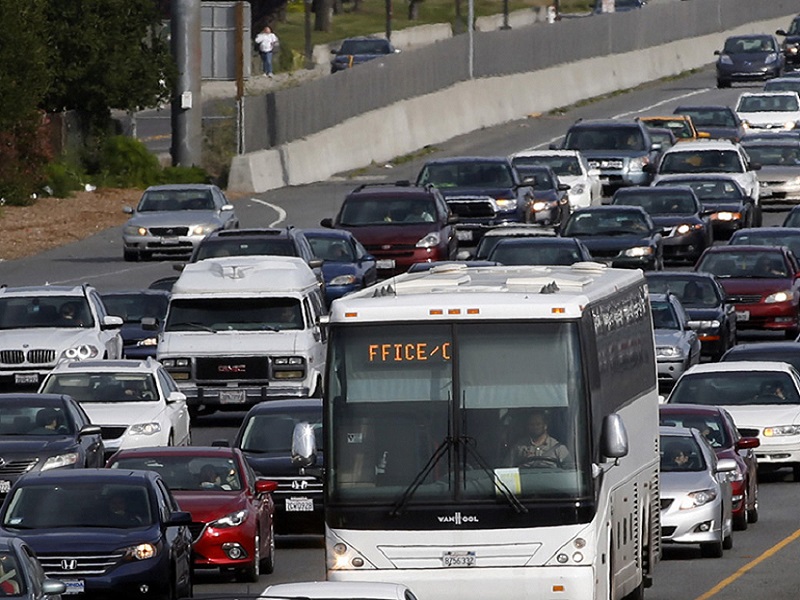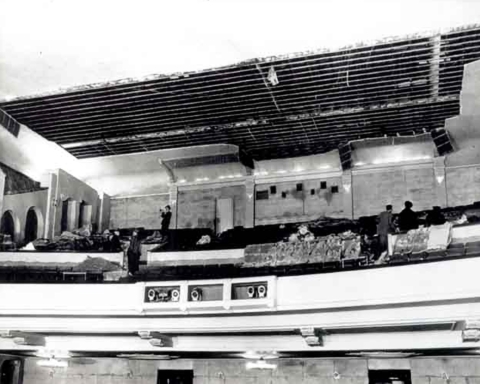A few columns ago, I pondered whether, and how much, San Mateo County will assert itself as the region begins to work more regionally. This is a problem because the region – which mostly means San Jose and San Francisco – sees San Mateo County as fat, happy and selfish. We’re also good looking, but that doesn’t seem to matter as much.
The region tends to think we’re a pass-through county – somewhere you have to drive through while you’re on your way to important places. Or that we’re an obstacle – in the way of the really important things necessary to cater to that never-ending hunger in San Francisco and San Jose to be even more really important.
Anyway, the question of county assertiveness took living form very quickly, and it’s roiling the usually calm waters of an upcoming vote on Friday night among all the county’s cities concerning whether Redwood City Councilwoman Alicia Aguirre will retain a seat on the Metropolitan Transportation Commission or be deposed by Millbrae Councilwoman Gina Papan.
There are any number of pressing regional issues, but the most immediate is an attempt to set regional requirements by which cities must build additional housing.
When the regionnaires say they think the whole region should build more housing, they mean us, because they think we haven’t done our fair share and we’ve been content to watch our housing values soar while opposing construction that will urbanize the county (see: fat, happy and selfish). That’s not correct, but as my biggest fans on social media like to say about me: Don’t let the facts get in the way of a good story.
THE SPAWN OF MTC: The regional housing hoo-ha was spawned by the MTC, which ate the Association of Bay Area Governments for breakfast a while ago. The argument there is that the state goals for building housing have been widely and routinely ignored.
That’s true, but it’s been a good example of regional co-conspiracy. The Bay Area communities have not built enough housing almost everywhere and San Mateo County, despite the stereotype, has done its share.
There was a revealing chart in a Sunday story in the San Francisco Chronicle about Governor Gavin Newsom’s proposal to force cities to build more housing by holding hostage their gas tax revenues. Certainly, adding a new problem in the form of broken-down roadways is an excellent way to get people to solve a largely unrelated problem. Maybe the governor should think about restoring city redevelopment authority, since that’s the way many cities were building new housing.
Anyway, the chart showed how far each Bay Area County has gone to meet its 2023 goal for more housing. The region is 36 percent of the way there; San Mateo County is 34 percent, which means we’re below average and we probably won’t get into our first choice for college. There’s an even better statistic from the countywide Home For All task Force: Five years ago, the ratio of new jobs to new housing in San Mateo County was 24:1. Now it’s 12:1 and we can credit H4A, which has been working on this for a couple of years, perhaps to the surprise of the region.
POOLING CARPOOL FUNDS: The other regional flap concerns the new carpool lane to be built on Highway 101 and, more specifically, who will own the lane, who will operate it and who gets to keep the money from it. I think it should be me, but that’s only because I want to put a third story on my house so I can be even fatter, happier and more selfish.
Two county entities – the San Mateo County Transportation Authority, which is putting up big bucks for the project, and the Cities/County Association of Governments – can’t decide between them whether the TA should own the carpool lane, own and operate it through a regional MTC-controlled thing, or own it and have it operated by the Santa Clara Valley Transportation Authority, which already owns and operates carpool lanes down there.
If the TA owns the lane, it keeps the money, which struck me as a good idea, even when I worked at the TA. And VTA has a sterling record of managing their managed lanes. There is some considerable apprehension that taking ownership and partnering with VTA means the county will own all the things that could go wrong. Things always go wrong. You can spend a lot of time worrying about what might happen. Or you can spend your time making things happen.
The housing and carpool issues are more complicated than they appear, but at the heart of each is the question of San Mateo County’s assertiveness, which brings us to the vote on Friday night at a meeting of the San Mateo County Council of Cities. This august body is made up of a representative from each city, and as the City Selection Committee, picks the city council members who serve on regional boards, including SamTrans, the TA and MTC.
Aguirre has been the cities’ representative since 2013 and she is seeking reappointment.
The contest comes down to this succinct summary: her critics think Aguirre isn’t aggressive enough; her critics think Papan is too aggressive.
Aguirre also has been criticized for not communicating enough, but the essence of Papan’s challenge is that Aguirre “has been lacking in representation.”
Aguirre says she has communicated extensively and that she has delivered where it matters most, bringing hundreds of millions of dollars to San Mateo County transit and transportation agencies. MTC is the region’s transportation money fountain and the main job of the commissioners is to drink deeply. We need to bring a big straw. Paper, of course, not plastic.
Contact Mark Simon at mark.simon24@yahoo.com.






